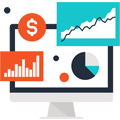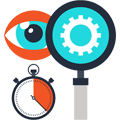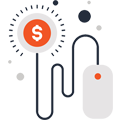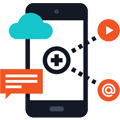
CRM will be the single largest revenue area of spending on enterprise software. If your business is going to last, you know that you need a strategy for the future. You have targets for sales, business objectives, and profitability. But getting up-to-date, reliable information on your progress can be tricky. How do you translate the many streams of data coming in from sales, customer service, marketing, and social media monitoring into useful business information?
A CRM system can give you a clear overview of your customers. You can see everything in one place — a simple, customizable dashboard that can tell you a customer’s previous history with you, the status of their orders, any outstanding customer service issues, and more.
You can even choose to include information from their public social media activity — their likes and dislikes, what they are saying and sharing about you or your competitors. Marketers can use a CRM solution to better understand the pipeline of sales or prospects coming in, making forecasting simpler and more accurate. You’ll have clear visibility of every opportunity or lead, showing you a clear path from inquiries to sales. Some of the biggest gains in productivity can come from moving beyond CRM as a sales and marketing tool, and embedding it in your business – from HR to customer services and supply-chain management.
Though CRM systems have traditionally been used as sales and marketing tools, customer service teams are seeing great benefits in using them. Today’s customer might raise an issue in one channel — say, Twitter — and then switch to email or telephone to resolve it in private. A CRM platform lets you manage the inquiry across channels without losing track, and gives sales, service, and marketing a single view of the customer.













